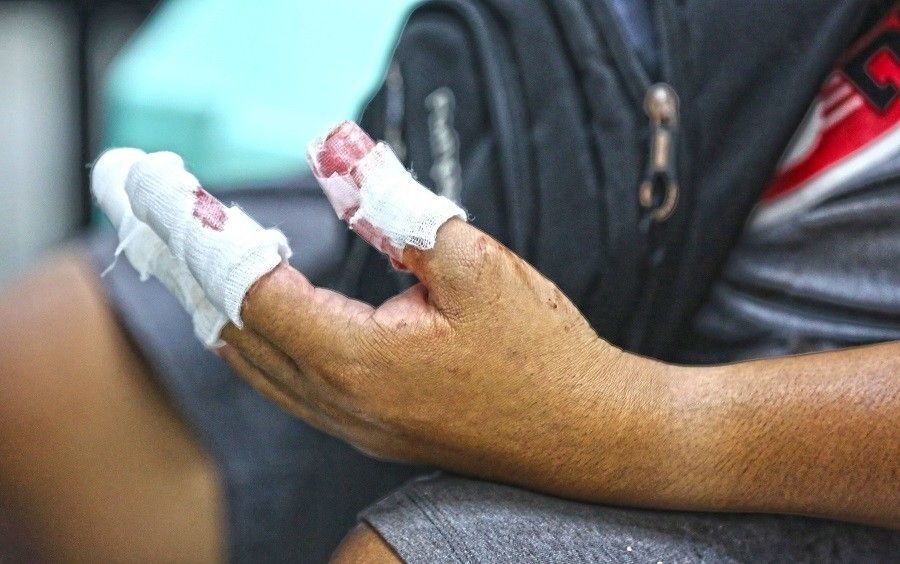9 more firecracker injuries recorded

MANILA, Philippines — As the New Year celebration nears, the Department of Health (DOH) recorded nine additional cases of fireworks-related injuries (FWRI), bringing the total number of those injured nationwide to 19.
The agency said the total FWRI cases since Dec. 21 was 37 percent lower than the cases posted during the same period in 2018 and 76 percent less than the five-year average.
Nearly half or 47 percent of the total FWRI were due to illegal fireworks, with boga accounting for 21 percent of the total cases followed by luces with 16 percent.
The National Capital Region had the most number of cases with four, followed by Ilocos region with three cases and Cagayan Valley and Central Visayas with two each.
Most or 74 percent of the FWRI admissions were males with age ranging from four to 60 years and more than half or 58 percent had blast or burn injuries with no amputation.
Seven had eye injuries while a seven-year-old from General Trias, Cavite was the only recorded blast injury requiring amputation. There was no reported case of stray bullet or fireworks ingestion.
To ensure minimum casualties during the New Year revelry, the Department of the Interior and Local Government (DILG) ordered the police to beef up their presence at designated firecrackers and pyrotechnic zones.
DILG spokesman Undersecretary Jonathan Malaya said policemen should provide security at these locations to ensure the people’s safety and to intensify the inspection of warehouses and processing areas of manufacturers and dealers of fireworks.
“The PNP is authorized to immediately confiscate illegal firecrackers and make arrests when necessary so the industry is advised to just follow the law,” he said in a statement.
Among the prohibited fireworks are piccolo, watusi, Judas belt, pillbox, atomic bomb, goodbye Earth, goodbye Philippines, boga, kwiton, lolo thunder and hello Columbia.
“There has been a steady decline (in the number of injuries) for the past three years and we can sustain that trend if we remain persistent in our efforts to implement laws and regulations on the use of firecrackers,” Malaya said.
Meanwhile, environment and health advocates urged all Filipinos to turn away from the dangerous tradition of blasting firecrackers and fireworks during the New Year Eve’s celebration to prevent harmful chemicals from polluting the atmosphere.
Thony Dizon, chemical safety campaigner of the EcoWaste Coalition, encouraged the public to ring in 2020 without generating pollutants that can put human health at risk.
He said that the blasting of firecrackers and fireworks, aside from generating toxic smog, scatter hazardous litter on streets and on water bodies.
Pulmonologist Maricar Limpin, secretary of the Philippine College of Physicians, explained that “blowing up firecrackers and fireworks generate microscopic pollutants that affect the quality of the air we breathe and thus pose serious health risks, particularly among children, the elderly and persons with cardiovascular, neurological and respiratory conditions.”
Coughing, wheezing, shortness of breath, as well as asthma and heart attacks are some of the negative effects of inhaling these pollutants, she added. – With Emmanuel Tupas, Ric Sapnu, Rhodina Villanueva
- Latest
- Trending




























